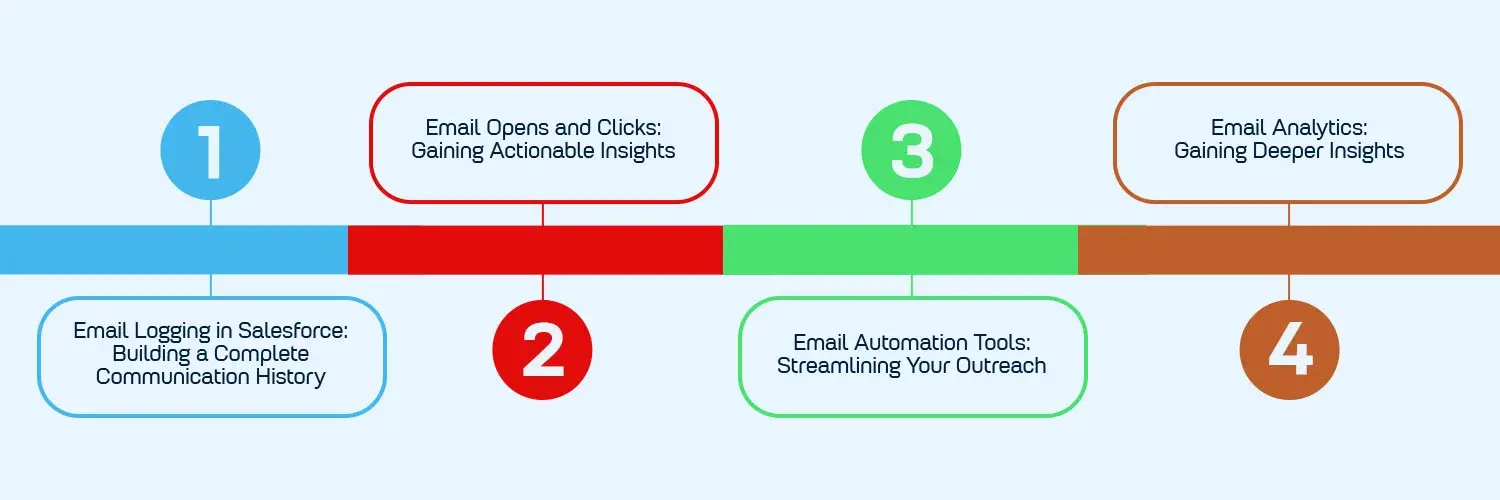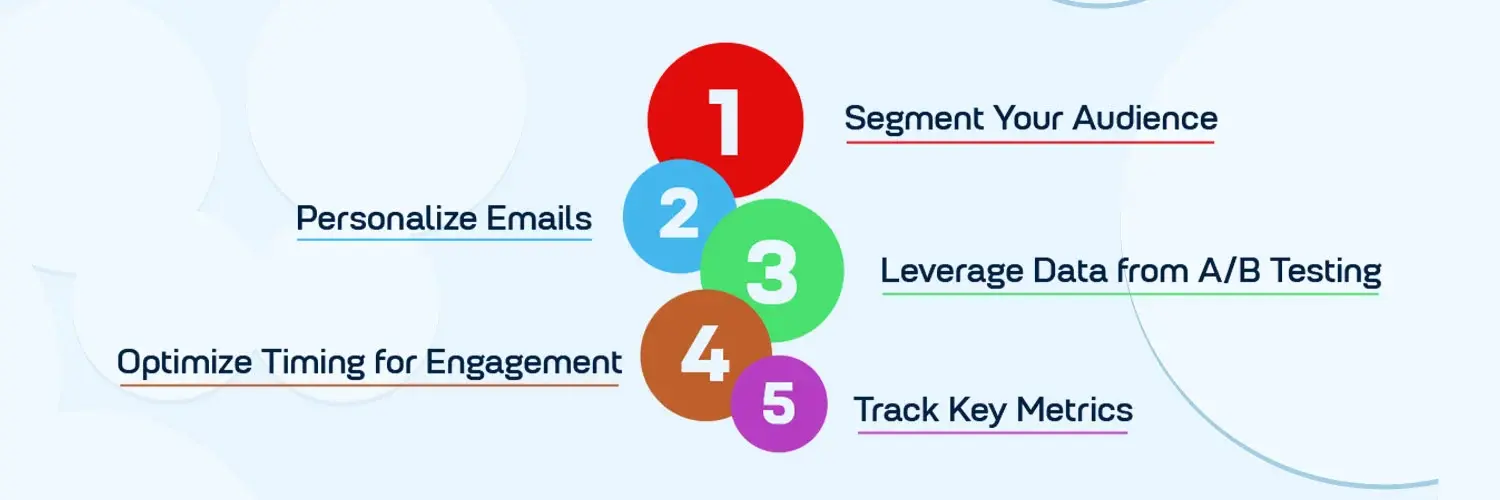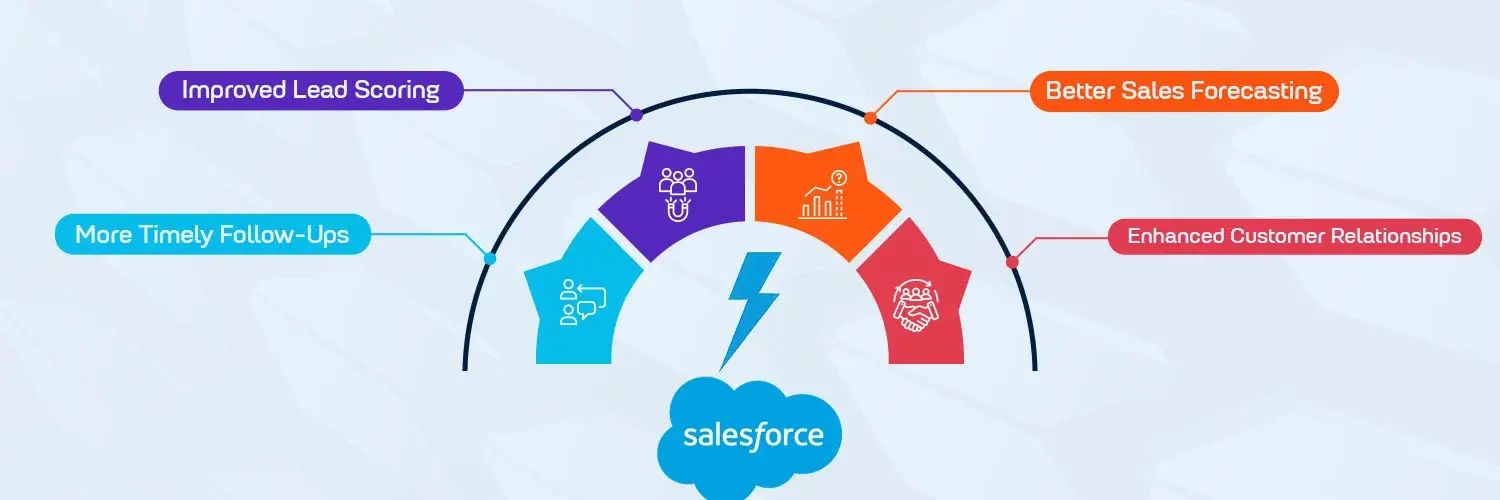
In today’s fast-paced sales environment, understanding how your customers engage with your emails is essential. Salesforce offers various solutions for tracking
email interactions, ensuring that your business can follow up with the right prospects at the right time.
Email tracking in Salesforce helps sales teams gain insights into customer behavior, enabling smarter decisions and better communication strategies. But how do you improve these tracking capabilities to optimize performance?
Let’s dive into the strategies you can adopt to take your email tracking to the next level.
Before discussing improvements, it’s vital to understand why Salesforce email tracking tools are critical for your sales efforts. Email is a key touchpoint for customer interactions, and knowing how recipients engage with your emails can help your team prioritize leads, personalize follow-ups, and ultimately close more deals.
With email engagement tracking in Salesforce, you can know who viewed your emails, clicked on links, and engaged with your content. These insights provide a clearer picture of your prospects’ interest levels and buying readiness.
Without efficient tracking, you could miss opportunities or waste time on unresponsive leads. Improving your sales email tracking optimization ensures that your sales team is always working with the most up-to-date information, which in turn can boost productivity and revenue.

To fully capitalize on email tracking in Salesforce, understanding all core features is essential. Salesforce provides built-in features that allow sales teams to monitor critical metrics, such as email opens and clicks. But how can you enhance these capabilities for maximum impact? Read below!
A key feature within Salesforce is email logging. This feature helps build a comprehensive communication history with each contact, providing a clear timeline of all email exchanges. With Salesforce CRM email tracking, every message is captured, allowing your team to reference past conversations quickly. This not only ensures consistency but also enhances collaboration across teams, as everyone has access to the same email history.
Moreover, by analyzing historical data, you can spot trends and behaviors, enabling more strategic follow-ups. Studies show that businesses using Salesforce email insights increase lead-to-opportunity conversion rates by 20%. This makes email logging in Salesforce a crucial tool for maintaining customer relationships over time.
Another powerful feature is the capability to keep track of when emails are opened or when your links are clicked. When you know exactly when and how recipients engage with your content, it becomes much easier to prioritize follow-ups. Did a prospect open your email multiple times? Did they click on a specific product link? These details give your sales team an edge, helping them tailor outreach efforts.
For instance, a report from Salesforce email analytics might reveal that emails with personalized subject lines have a 26% higher open rate. This kind of data is invaluable for optimizing future campaigns, ensuring that your emails are always hitting the mark.
Salesforce email automation tools are incredibly useful for improving the efficiency of your email tracking efforts. With these tools, you can automate follow-up emails based on customer behavior. For instance, if a recipient opens an email but doesn’t respond, an automated follow-up can be triggered after a set amount of time. This helps ensure that no leads fall through the cracks. Automation also allows your team to scale personalized messaging. With the help of email templates that are customized to each recipient's behavior, you can deliver relevant content without spending too much time on manual outreach. Research shows that businesses that use automated follow-ups experience a 23% higher conversion rate than those that rely solely on manual efforts.
Salesforce email analytics provides a deeper understanding of how your emails are performing. You can easily track the core metrics like open rates, conversion rates, and click-through rates, over time. By analyzing this data, you can fine-tune your email content and timing to achieve better results.
For example, you might discover through Salesforce email insights that emails sent on Tuesdays at 10 AM tend to have the highest open rates for your particular audience. This data allows you to optimize your email campaigns for maximum engagement.
With these analytics, your sales team can also track which types of content (e.g., product information, case studies, or white papers) resonate most with different segments of your audience, helping you tailor your approach even further.

To get the most out of email tracking in Salesforce, adopting best practices will help you optimize your email tracking strategy. These methods not only boost engagement but also allow your sales team to make informed, data-driven decisions. Let’s explore a few proven strategies that can enhance your performance:
One of the most effective ways to improve your email performance is by segmenting your audience. When you divide your audience into specific groups based on industry, behavior, or demographics, you can deliver tailored content that speaks to their needs. For instance, sending personalized email campaigns to leads in different industries ensures that each group receives content addressing their unique pain points. This targeted approach increases the likelihood of engagement and improves both open and click-through rates.
Personalization is key when it comes to engaging your audience.Salesforce email tracking tools allow you to use recipient-specific data to craft personalized messages. Including a recipient's name, company, or product recommendations makes emails feel more relevant and less generic. Personalization doesn’t just increase open rates—it fosters stronger relationships with your prospects, improving response rates. A study from Experian found that personalized emails deliver six times higher transaction rates than non-personalized ones.
A/B testing helps you understand which elements of your email resonate best with your audience. You can test various components such as subject lines, content, and send times. For example, running A/B tests on your subject lines allows you to identify which version drives higher open rates.
Additionally, testing different calls-to-action (CTAs) can help determine what encourages recipients to click through to your landing pages. With Salesforce email analytics, these tests
provide real-time data to optimize your strategy continuously. A/B testing also offers insights that can inform future campaigns, ensuring consistent improvement.
Timing can make or break your email campaign. Leveraging Salesforce email insight can help you discover when your audience is most likely to open and engage with your emails. For instance, if your data shows that emails sent at 10 AM on weekdays receive the highest engagement, you can adjust your sending schedule accordingly. This practice maximizes the chances of your email being seen and acted upon. Studies reveal that sending emails at optimal times can improve open rates by 20-30%
To ensure continuous improvement, it’s essential to regularly track and analyze key metrics such as open rates, click-through rates (CTR), and conversion rates. With Salesforce CRM email tracking, you have access to detailed reports that provide real-time data on your email performance. By closely monitoring these metrics, your team can make informed decisions, identify what’s working, and adjust campaigns accordingly. For example, if your CTR is low, you can test different CTAs or tweak the email’s content to better align with recipient interests.
Integrating third-party Salesforce email tracking tools like Pardot, Mailchimp, or Active Campaign can bring additional value to your tracking efforts. These tools provide extended functionality, such as advanced segmentation, more detailed reporting, and enhanced automation features, which help streamline your email marketing efforts.
With email tracking integration with Salesforce, these third-party tools sync directly with your CRM, allowing your sales team to have a comprehensive view of all email interactions. This makes it easier to manage campaigns, track engagement, and follow up with leads at the right time.
For instance, Pardot provides features like lead scoring, which ranks leads based on their engagement with your emails and website, helping your sales team focus on the most qualified leads. Mailchimp’s automation features allow you to create drip campaigns that nurture leads over time, automatically sending the right email at the right stage of the buyer’s journey.

The ultimate goal of email tracking in Salesforce is to improve your overall sales performance. When used effectively, email tracking can help your sales team make more informed decisions, prioritize high-value leads, and close deals faster. Here are a few ways email tracking integration with Salesforce contributes to better sales performance:
By using data from email engagement tracking in Salesforce, your sales team can assign scores to leads based on their engagement level. Leads who frequently open emails, click on links, and engage with your content can be given higher scores, indicating they’re more likely to convert into customers. This allows your sales team to prioritize their outreach, focusing on the leads who are most likely to buy.
With Salesforce email automation tools, you can ensure that follow-up emails are sent automatically based on a recipient’s behavior. If a lead opens an email but doesn’t click any links, a follow-up email can be triggered within a set time frame to re-engage the lead. Timely follow-ups have been shown to increase response rates, helping your team stay top-of-mind with prospects.
By analyzing Salesforce email analytics, your sales team can identify trends in customer behavior that help forecast future sales. For example, if you notice that a high percentage of leads who engage with certain types of emails eventually convert into customers, you can use that information to predict future sales volumes. This data-driven approach enables more accurate sales forecasting and helps your team set realistic targets.
Personalizing emails and sending targeted content based on past behavior can significantly improve customer relationships. Salesforce allows you to track every email interaction, ensuring that your sales team has a complete view of each customer’s journey. This information can be used to craft more meaningful follow-ups that are tailored to the recipient’s needs, ultimately leading to stronger relationships and increased customer satisfaction.
In today’s competitive sales environment, having the right data at your fingertips is crucial. By leveraging email tracking in Salesforce, your business can gain valuable insights into customer behavior, optimize email campaigns for better engagement, and improve overall sales performance.
From utilizing features like Salesforce email analytics and email engagement tracking in Salesforce to integrating powerful third-party tools, there are numerous ways to take your email tracking to the next level. Remember, it’s not just about tracking who opened your emails—it’s about using that data to make smarter, more strategic decisions.
By following the best practices outlined in this guide and integrating email tracking with your overall sales strategy, your business will be well-positioned to achieve higher conversion rates, more effective outreach, and better customer relationships.
If you’re ready to elevate your email tracking and improve sales outcomes, explore more solutions at SMB Business Solution. Let us help you
take full advantage of Salesforce CRM email tracking tools and services tailored to your business needs.
.
Copyrights © 2025 SMB Business Solution | All Rights Reserved
Designed & Developed by Digital Hyperlinks (PVT) LTD.